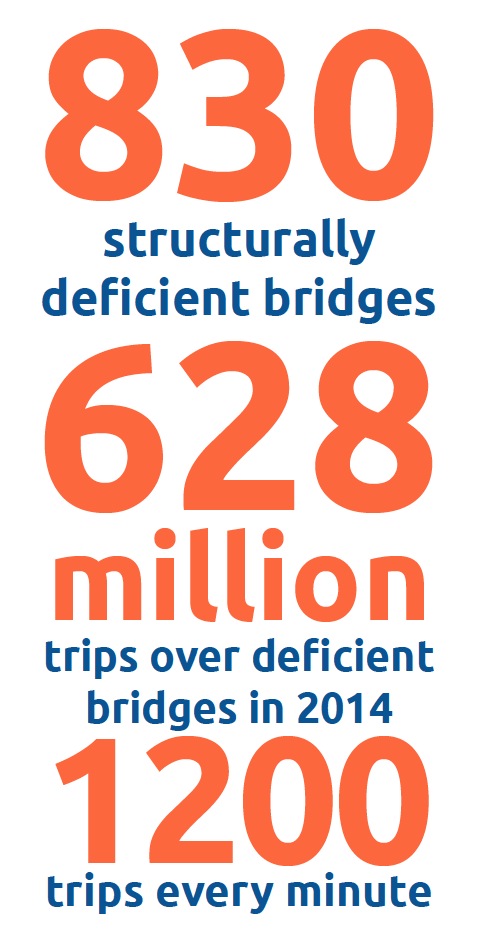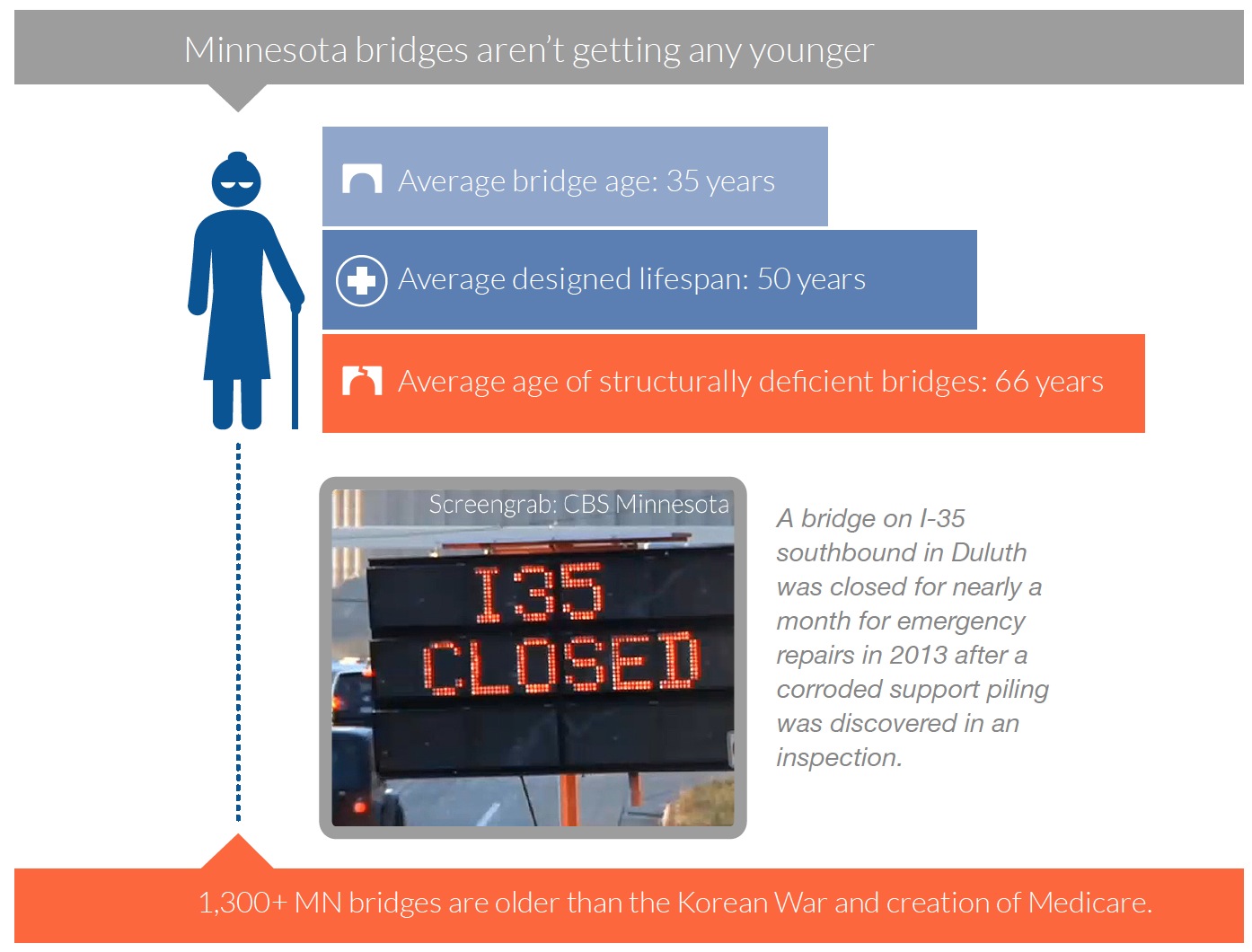TRANSPORTATION FOR AMERICA
Minnesota’s deficient bridges: How will we pay to repair them?
 Every day, millions of people from all walks of life in Minnesota cities, towns and rural areas travel over one of the state’s 12,961 bridges — essentially any structure longer than 20 feet that carries vehicle traffic. These bridges carry commuters through and within our cities, move people from town to town, help farmers bring their goods to market, and get freight from A to B each and every day.
Every day, millions of people from all walks of life in Minnesota cities, towns and rural areas travel over one of the state’s 12,961 bridges — essentially any structure longer than 20 feet that carries vehicle traffic. These bridges carry commuters through and within our cities, move people from town to town, help farmers bring their goods to market, and get freight from A to B each and every day.
But today, far too many of these bridges are rated structurally deficient — bridges in urgent need of repair or replacement. Minnesota today has 830 structurally deficient bridges, representing 6.4 percent of the state’s 12,961 bridges. Those 830 bridges represent a looming crisis for the state.
The average age of these sub-par bridges is 66 years — well over the typical design life of 50 years and nearly double the average age of all Minnesota bridges (35 years old). More than one in ten Minnesota bridges were built before 1948 — which means more than 1,300 bridges are older than the Korean War and creation of Medicare.
Minnesota drivers collectively took close to 628 million trips over deficient bridges in 2014. That’s more than 1.7 million trips per day or almost 1,200 trips every minute taken over deficient Minnesota bridges in 2014.
What does “structurally deficient” mean?
Highway bridges have three primary components: 1) the deck, which is the surface of the bridge that cars, trucks and people contact — the pavement, typically; 2) the superstructure, which consists of the components that support the deck; and 3) the substructure, which is where the bridge contacts the ground. Each of these bridge features is given a rating between 0 and 9 when inspected, with 9 signifying the best condition. Federal guidelines classify bridges as “structurally deficient” if one of these three key components is rated at 4 or less (poor or worse), meaning engineers have identified a major defect in its support structure or its deck. (There are a handful of other criteria that can result in a deficient grade, but for the majority of deficient bridges, one of these three primary components rates a 4 or below.) Federal law requires states to inspect all bridges 20 feet or longer at least every two years, though states typically inspect structurally deficient bridges far more often.
Minnesotans and Minnesota businesses rely on bridges each day that are subject to closure or weight restriction if increased maintenance and reconstruction are not undertaken — a potentially crippling impact on personal travel and freight movement. And as the location of the most deadly bridge collapse in recent American history, Minnesotans know the impacts better than most.
Who will pay the tab?
The funds to repair bridges come mostly from gas taxes at the federal and state levels, from property, sales or other taxes at the local level, and state and local bonding. Federal dollars are flat or falling; the federal tax has lost about a third of its value to inflation since it was last raised in 1993. Legislation passed by the Minnesota legislature in 2008 following the I-35W collapse raised the gas tax by 8.5 cents per gallon over several years, but the value of state revenues is expected to decline against rising construction costs and debt service payments over the coming decades.
The situation is worse at the local level. No federal money is dedicated to repairing local bridges — and the federal contributions that once helped address the backlog are shrinking. A portion of state gas tax revenues and bond proceeds flow to local governments, but only a small share of state funds is dedicated to repairing local bridges.
Ownership of a bridge usually determines who is responsible for funding repairs, regular maintenance or replacement. Of the 12,961 bridges in Minnesota, only 3,618 (27.9 percent) are maintained by the state. 9,137 (70.5 percent) are maintained by localities or counties.
8.2 percent of those 8,233 locally-maintained bridges are structurally deficient, significantly higher than the state’s average rate of 6.4 percent. And a staggering 90 percent (750 total) of Minnesota’s 830 deficient bridges are maintained by local entities.
Download full version (PDF): The State of Minnesota’s Bridges
About Transportation for America
www.transportationforamerica.com
Transportation for America is an alliance of elected, business and civic leaders from communities across the country, united to ensure that states and the federal government step up to invest in smart, homegrown, locally-driven transportation solutions. These are the investments that hold the key to our future economic prosperity.
Tags: I-35, Minnesota, MN, T4America, Transportation for America








 RSS Feed
RSS Feed